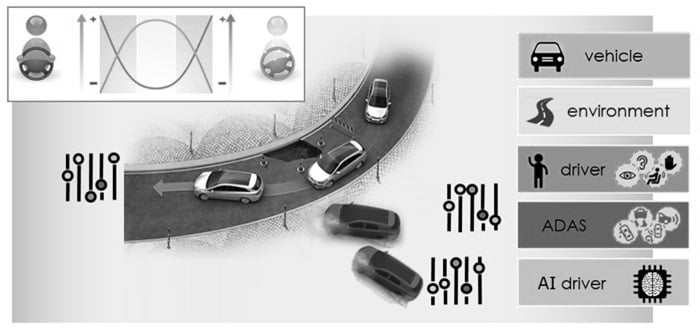Driver-in-the-Loop (DIL) simulators are becoming a more important ADAS and Autonomous vehicle / system development tool. But how can this be? After all, the intent of these emerging in-car technologies is to “reduce the burden” of a human driver’s vehicle control task, so first-pass logic might conclude that involving real drivers in a vehicle simulation loop is becoming superfluous. In fact, it is the opposite…
Market-readiness for any vehicle with driver assist / handover technology requires a development process that encourages early and often contact between real drivers and imagined systems. So we are, in effect, witnessing a re-introduction of real drivers into the model-based development process that has come to dominate vehicle developments during the last few decades.
DIL simulation benefits
Offline simulation can deliver thousands of exploratory permutations via Software-in-the-Loop (SIL) and Hardware-in-the-Loop (HIL) connectivity, but there remains the unavoidable task of vetting a reduced set of component and system candidates by driving real prototype vehicles on real roads and proving grounds, with experienced evaluators behind the wheel. A new problem has been emerging in recent years: The complexity of on-board systems means that this “reduced set of component and system candidates” is growing – so there is simply much more to validate in a much shorter period of time.
In a DIL simulator, both expert and novice drivers are able to experience how on-board systems perform in realistic, immersive virtual test drives, long before the first prototype is built, as well as concurrent with physical prototype testing. Unexpected interactions between human drivers and on-board system functions can be exposed early on, when fixes are faster, cheaper and far less likely to negatively impact a programme. For example: What happens when real-world driver behavior interferes with simultaneous braking assist and stability control strategies?
The Eye of the Beholder
Ansible Motion has deployed a number of DIL systems worldwide that feature graphics and terrain rendering by rFpro. Since our simulators are a breed apart, aimed at engineering-class simulation use cases, rFpro’s low-latency, high bandwidth image generation and terrain modelling technologies can be a perfect fit for certain classes of experiments.
There are many imaging tools that do an excellent job of “objectifying” virtual driving environments for on-board sensors, but in some DIL experiments it is also necessary to deliver real-time sensory feedback to human eyes. For example, experiments that require realistic driver behavior in combination with system intervention during transient / emergency maneuvers cannot tolerate any lateral “blurring” of rendered images or human-eye aberrations.
We can readily recognize that what is pleasing to human eyes and what is pleasing to sensors is, of course, quite different. The delays of tenths or even hundredths of milliseconds that might be acceptable to some SIL (or real) sensors and some sub-sets of ADAS system verifications, might not be acceptable to human drivers. A driver will quickly become disoriented if their expectations are violated – and if this changes their behavior, DIL simulator experiments can be invalid.
DIL simulation benefits
If human interaction is important to the validation work at hand, the DIL simulator must deliver the performance and capability to encourage drivers to behave just as they would in real situations. For example, DIL simulator experiments that explore handover situations between autonomous and human driver modes will require complex system interactions on the vehicle modelling side as well as high fidelity (computational / command) execution inside the simulator lab. In such cases, Ansible Motion's simulation approach ensures that human drivers experience compelling virtual worlds, such that human-vehicle interactions can be explored with confidence and to good end.
To learn more about how Driver-in-the-Loop (DIL) simulator technology is delivering compelling experiences for drivers and engineers download our FREE eBook, Looking down the road: Harnessing the benefits of driving simulator technology.


